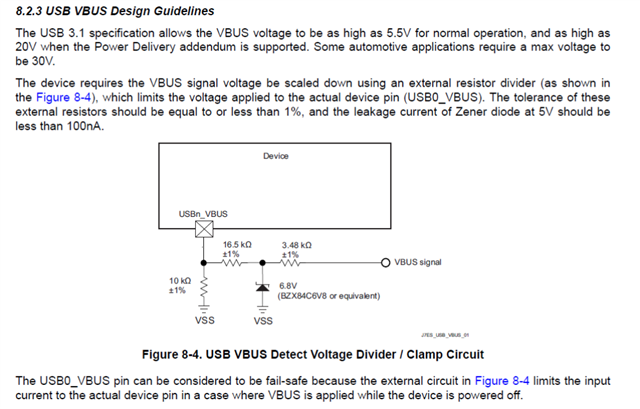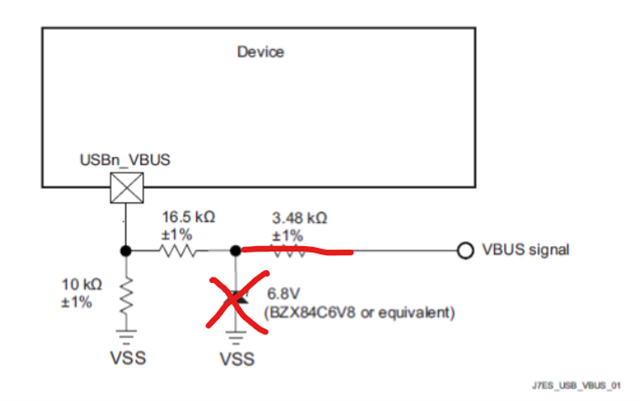Tool/software:
Hi,
My assigned focus customer has a question about the USB VBUS pin when you are only transferring data.
We only provide connections to DP and DM to our own hardware (we don't need to supply any voltage and therefore do not VBUS or DRVVBUS on this connector). What is the recommendation for this VBUS pin. I am assuming we can leave it floating and we won't put any of the recommended components in the picture below into the schematic? Basically no connection to the USBx_VBUS / DRVBUS. Let me know if I need to connect anything to these pins for other purposes (like sensing the port is connected).

So I read through https://www.ti.com/lit/ug/sprado8/sprado8.pdf (AM62L (AM62L32, AM62L31) Processor Family Schematic Design Guidelines and Schematic Review Checklist) and it doesn't exactly address this particular use case. Section 7.x gives some great detail but I couldn't address exactly this scenario.
Can we get some advice?
Best Regards,
Blake
Thanks!
Blake


